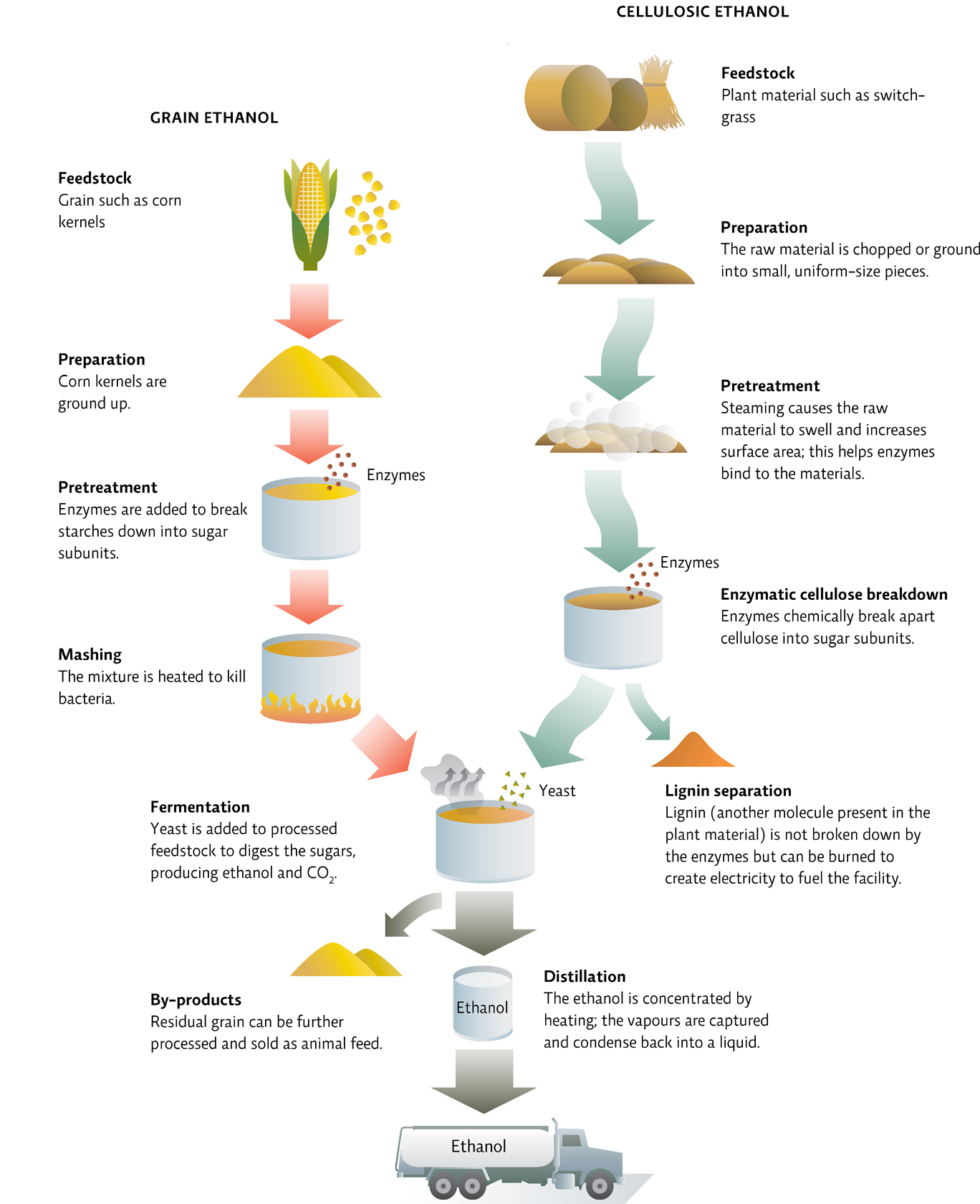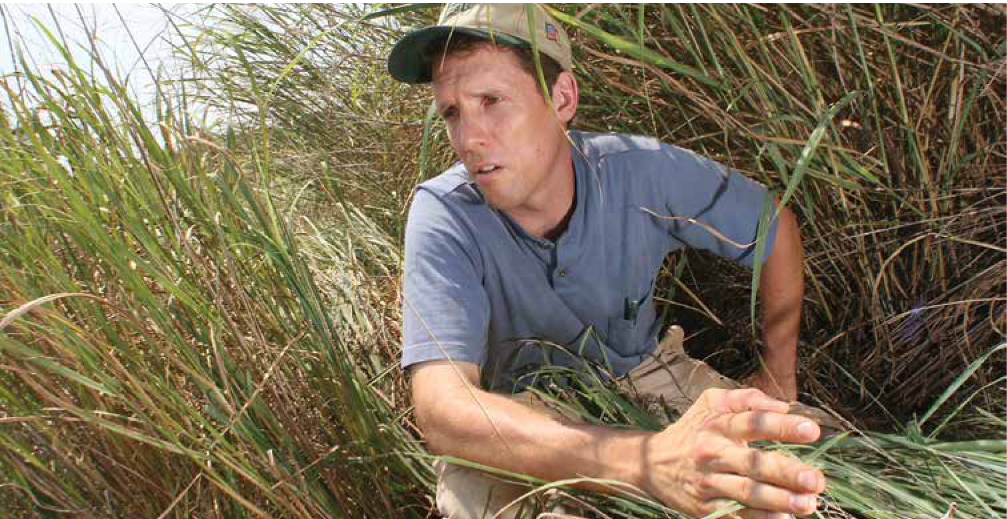25.7 There are many reasons why biofuels have not solved our dependence on fossil fuels.
Despite the hopes of Tilman and others, cellulosic ethanol is not likely to arrive at a pump anytime soon. For one, it’s not easy to get the energy out of the plants: while starch from corn is soft, cellulose in grasses is complex and durable, not easily degraded. “There’s a reason we make houses and furniture out of cellulosic material such as wood,” says Mayfield. “It doesn’t like to spontaneously turn into something else.” Several attempts use high temperatures, acid, enzymes, and yeast to tear apart the strong bonds—a slow, expensive, and energy-intensive process that has proven difficult to scale up. [infographic 25.6]

There is currently no large-scale commercial facility online for converting cellulose-rich biomass to ethanol, whether from switchgrass monocultures or LIHD grasslands, but there are some smaller prototype facilities, and more are under construction around the world. One began operation in Vonore, Tennessee, in 2010 as part of the $70.5 million Biofuels Initiative of the University of Tennessee. The goal is to create a template for the logistics of growing, handling, storing, and transporting the thousands of bales of switchgrass that would be processed daily at a commercial facility. “It’s the holy grail,” says Michael Palmer, a professor of botany at Oklahoma State University who tracks biofuel research. “Millions and millions of dollars from the government and private sectors are being pumped into the technology of cellulosic conversion.” Verenium Biofuels Corporation, a Massachusetts-based firm that has proprietary rights for special enzymes used in the breakdown of cellulose, recently sold its business and demonstration facility in Louisiana to BP for $98 million. The goal is to produce low-cost cellulosic ethanol from grasses, wood chips, agricultural waste, or even garbage.
466
467

Algae, too, will take several years before it can be scaled up, predicts Mayfield. It’s relatively easy to convert algae to diesel fuel, he says, but building the infrastructure to do this on a large scale—such as massive ponds—delays progress. He predicts that algae will become widely used as a biofuel source in the United States before switchgrass, however, simply because it has a bigger customer: the U.S. military, which can pay a premium for renewable diesel to fly its jets. Furthermore, there already is a major source of ethanol—corn. “I think algae are more likely to be commercially deployed in the next several years.”